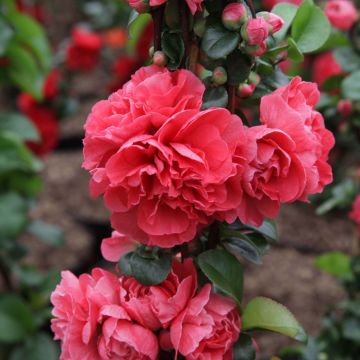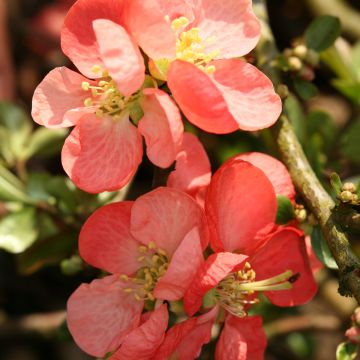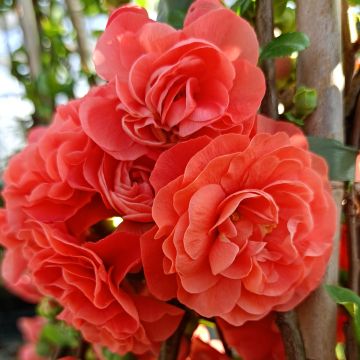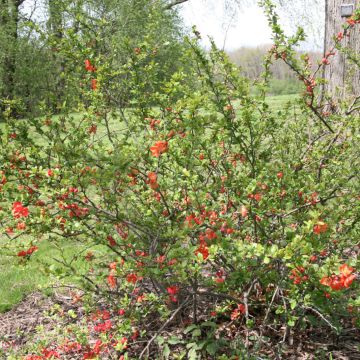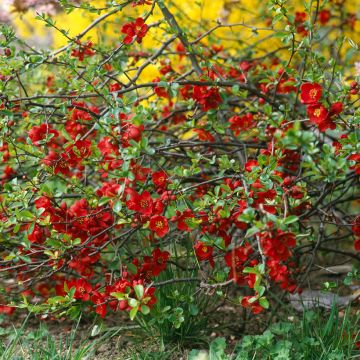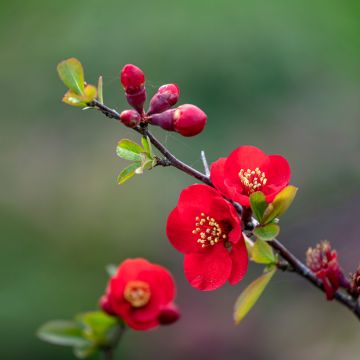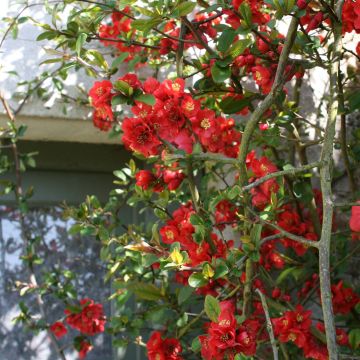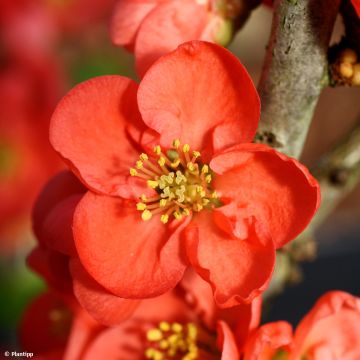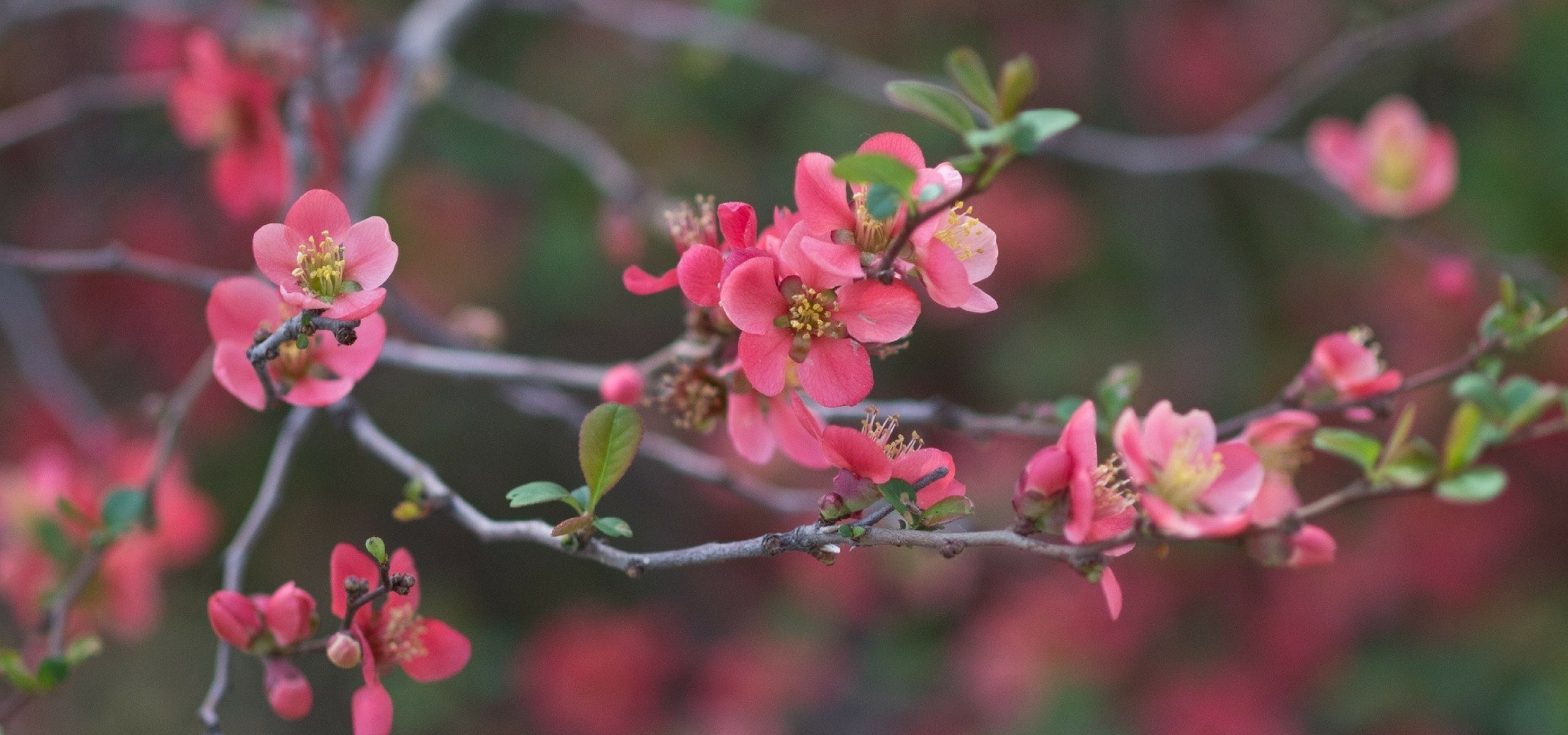
How to prune early flowering bushes
Forsythias, Japanese quinces or flowering currants: discover when and how to prune them.
Contents
Early spring-flowering bushes spend the winter in dormancy, and it is during the previous summer that they develop the buds containing their future flowers. Therefore, to avoid compromising flowering due to poor timing, it is crucial to prune them with this cycle in mind. Discover when and how to prune early flowering bushes.
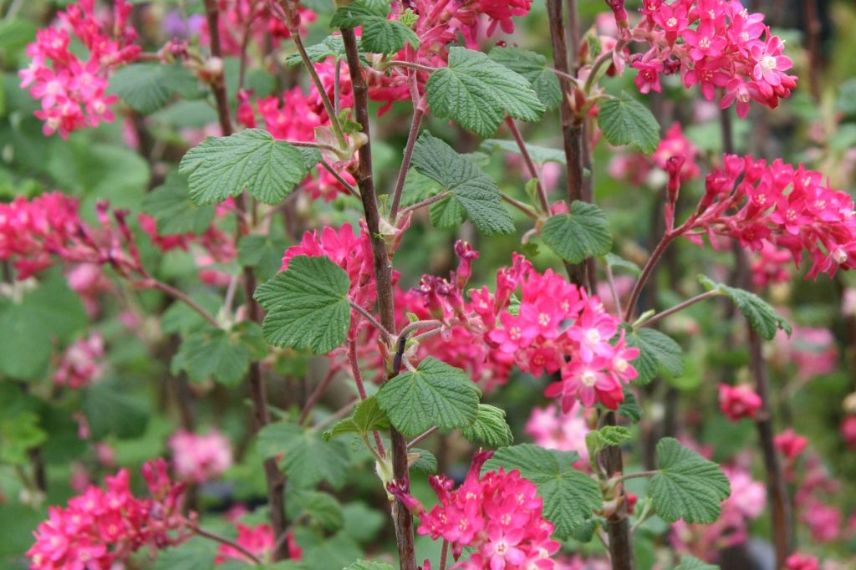
Ribes sanguineum ‘King Edward VII’, flowering in March – April
What are the early flowering bushes?
Among the bushes that bloom in March, April, or May, we can count, for example:
- forsythia,
- flowering currant,
- Japanese quince,
- camellia,
- deutzia,
- weigela,
- snowball viburnum,
- mock orange.
 Forsythia, Japanese quince, ‘High Fragrance’ camellia, and snowball viburnum[/caption>
Forsythia, Japanese quince, ‘High Fragrance’ camellia, and snowball viburnum[/caption>
There are exceptions to this specific pruning:
- First of all, heather soil shrubs such as Azaleas, Rhododendrons, Camellias, Pieris, Andromedas, Witch hazels, Daphnes, Kalmias, Heathers, as well as Holly and Mahonia do not particularly tolerate pruning. However, removing some cumbersome, broken, or too old branches is always feasible, as well as occasional pruning of the entire bush. Additionally, to densify the bush, it may also be necessary to prune it at the beginning of its growth.
- Next, evergreen shrubs used for hedges, whose spring flowering is not necessarily sought after (such as Photinia, Cherry laurel, Portuguese laurel, etc.) can be pruned two to three times a year if their growth is deemed excessive.
However, be careful: the European Parliament Regulation requires member states to take measures on “the prohibition of pruning hedges and trees during the breeding and nesting period of birds.” We therefore recommend not to prune your hedges between 15 March and 31 July. In light of the collapse of biodiversity we are witnessing today, it is important for everyone to act in favour of conservation, particularly for insects and birds.
Read also
Pruning spring-flowering bushesWhen to prune them?
To ensure abundant flowering year after year, pruning spring-flowering bushes is necessary as soon as flowering is finished. If you delay pruning after flowering (no later than mid-June for forsythia, July for mock orange), the bush will not have enough time to produce shoots with buds before the growth of vegetation ceases.
Carry out this pruning in April for forsythia, flowering currant, Japanese quince, and camellia. Proceed in May for lilac and spring spiraea, and in June for deutzia, weigela, snowball viburnum, mock orange, and photinia. Generally, pruning is done within 1 to 2 months following the end of flowering.
→ Remember that each plant profile you consult on our site provides detailed pruning instructions!
Discover other Chaenomeles - Quince tree
View all →Available in 1 sizes
Available in 1 sizes
Available in 1 sizes
Available in 1 sizes
Available in 2 sizes
Available in 1 sizes
Available in 1 sizes
Available in 2 sizes
Available in 2 sizes
Available in 1 sizes
How to prune them?
In general, it involves shortening the branches that have flowered a few centimetres above young branchings or buds, and then removing weak branches or those that grow towards the centre.
- Completely eliminate branches that are too thin, damaged, twisted, or crossing to encourage light penetration into the centre of the stump.
- Cut at their base the very long branches that have flowered,
- Shorten by 1/3 the branches that have flowered and are moderately long.
- Make angled cuts about 0.5 to 1 cm above a leaf or a bud.
Read also
Choosing the right pruning shearsWhat tools to use?
Hedge trimmer, shear or pruning shear?
- Shrubs left to grow freely are pruned with a hand pruning shear, or with a curved blade pruning shear, or even a pruning saw for the thickest branches.
- Hedges are trimmed using shears or hedge trimmers, whether they are petrol or electric.
Make sure to carry out the pruning with well-sharpened and disinfected tools using alcohol. This will facilitate proper healing of wounds and prevent the transmission of diseases. When removing old wood, the location of the cut does not matter: the plant will either respond by stimulating the development of internal buds that will break through the bark to produce new shoots, or by producing suckers directly from the soil.
- Subscribe!
- Contents

































